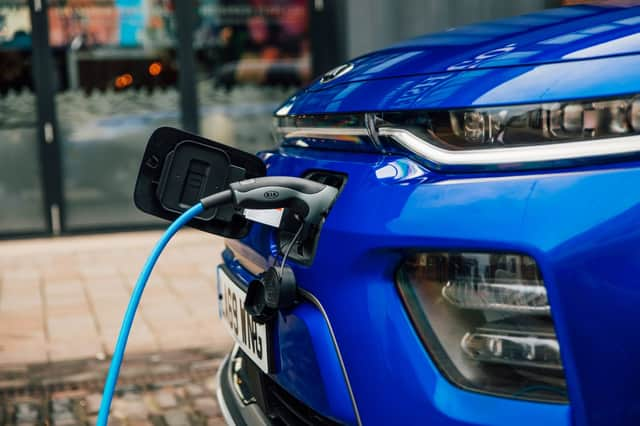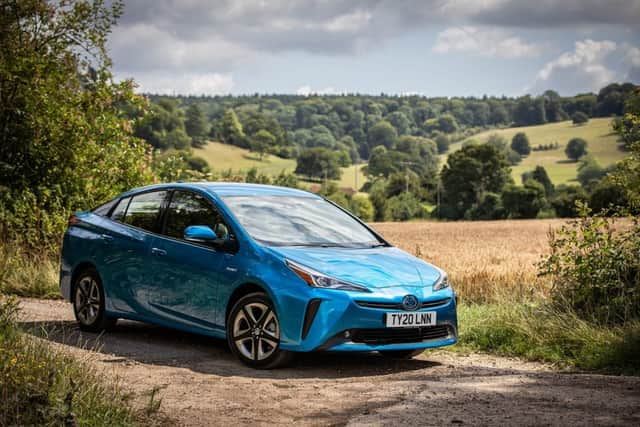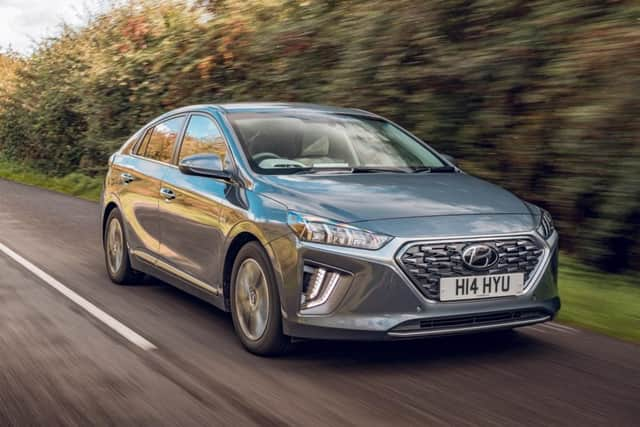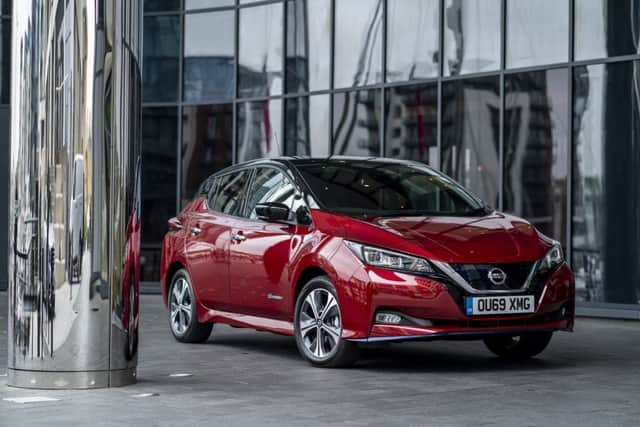A buyers’ guide to hybrids and electric cars


As the UK car market struggles and diesel sales continue what appears to be a terminal decline, registrations of alternatively fuelled vehicles (AFVs) have proved to be a rare glimmer of hope.
In 2019 135,700 were sold across the various categories AFVs and they accounted for a record 7.8 per cent of all new car registrations.
Advertisement
Hide AdAdvertisement
Hide AdDespite their growth, AFVs, including hybrids and electric vehicles (EVs) are still a small proportion of all car sales and surveys repeatedly find that drivers are confused and unsure about much of the terminology around the cars and about their capabilities.


This guide aims to address some of that confusion and help you decide if an AFV is right for you by breaking down the differences, strengths and weaknesses of each type of AFV.
There are three main types of AFVs - series-parallel hybrids (also sometimes called self-charging or simply hybrids by car makers), plug-in hybrids (PHEV) and pure electric vehicles (EV).
Mild hybrids essentially use an advanced starter generator to offer minimal electrification and can't run in electric-only mode, so aren't covered here.
Series-parallel or self-charging hybrids


Series-parallel hybrids pair a traditional internal combustion engine (ICE) with an electric motor and a small battery.
The engine and motor can work together or in isolation depending on the requirements and use energy diverted from the engine or regenerative braking to charge the battery.
Some manufacturers describe these as self-charging as the hybrid system replenishes the battery without the need to plug it in but some EV evangelists have taken offence at this because the battery is charged by an engine that burns petrol.
These hybrids have a very short range using just the electric motor - usually only a few miles. The motor is there mostly to support the engine and offer greater performance with relatively low emissions and fuel use.


Advertisement
Hide AdAdvertisement
Hide AdSeries hybrids are attractive to business buyers thanks to their low CO2 emissions, which have a positive effect on tax costs. They also offer good economy, if driven correctly, giving greater range than an equivalent ICE car.
Series-parallel hybrids are a good fit for drivers looking to reduce running costs without sacrificing performance or driving range and who don’t want to worry about charging infrastructure.
Pros:
Potentially high economyGood value for business buyersNo range anxiety
Cons
Very short EV-only rangeNo longer eligible for government grantExpensive compared with ICE equivalent
Plug-in hybrids
These work on a similar basis to self-charging hybrids but feature a far larger battery pack.
While most self-chargers can do fewer than 5 miles in EV mode, the latest PHEVs can cover more than 30 miles on battery power and can be driven at motorway speeds in EV mode.
PHEVs charge their batteries via regenerative braking and engine charging but can also be charged via dedicated power points or even a home plug socket. Depending on the rate of charge these can take between 25 minutes and five hours to fully replenish an average PHEV’s battery.
Some manufacturers will contribute to the price of a home charger, which will usually be a 7kW “fast” charger, and there is a £500 government grant to help cover the cost.
Advertisement
Hide AdAdvertisement
Hide AdPHEVs benefit from huge economy claims thanks to the way they perform in testing. You will probably never see 170mpg in real life but the lab figures do allow them to fall into favourable emissions and tax brackets for business buyers, and they offer better economy than equivalent ICE cars thanks to the opportunity to run in electric-only mode.
However, their complex hybrid systems do mean there are more parts to go wrong and potentially expensive bills if they need specialist repairs.
PHEVs are a good choice for drivers who want to complete mid-range drives with a low environmental impact but regularly need the flexibility and range of an ICE.
Pros
Better EV range than ‘self-chargers’Option to charge via private and public charge pointsNo range anxiety thanks to ICE
Cons
Small EV range compared to BEVsIdeally need access to home chargerComplexity of hybrid systems
Electric cars
The furthest removed from “traditional” cars. EVs use one or more large electric motors to drive their wheels, drawing power from a large battery.
EVs offer a number of benefits over ICE cars. They produce zero tailpipe emissions, are quieter and smoother and have fewer moving parts, which mean there’s less to go wrong and they’re cheaper to service.
Buyers of new models are also eligible for a grant of up to £3,000 as well as the £500 charger contribution. However, EVs remain more expensive than a similar sized ICE car.
Advertisement
Hide AdAdvertisement
Hide AdFor many drivers range anxiety remains the big worry with an EV. The good news is that some of the latest models, such as the Hyundai Kona Electric and Kia e-Niro and Soul EV offer genuine range of more than 250 miles on a charge while many others achieve real-world distances of 150 miles or more.
While that is a problem if you regularly do long distances, research has shown the average commuter only covers around 30 miles a day, so a two-way trip is well within the range of any new EV.
The other worry remains around infrastructure. For commuters planning to charge at home or work this isn’t a serious matter but for drivers undertaking longer drives they need to know there is a reliable network of chargers. The good news is that there are already 11,000 chargers at 6700 locations in the UK and that number is rising all the time.
Charging costs do vary, however. Fully charging a 40kW car with around 120 miles of range will cost around £5.20 at home but up to £16 at the more expensive public chargers.
The biggest drawback of EVs remains the charging time. With the common 7kW home charger a 40kW Nissan Leaf will take 7.5 hours to reach full, a 64kW Kona will take just over nine hours. At the most common 50kW rapid chargers, a Leaf takes 60 minutes to reach 80 per cent and a Kona around 75 minutes. That means long journeys will take longer and require more planning than in an ICE vehicle.
EVs are far more capable than even a few years ago and are now a viable option for many drivers looking to cut their environmental impact and running costs significantly. They are ideally suited as a commuter car as long as you have access to a charge point but drivers who regularly cover very long distances might struggle with the compromise in range and “refuelling” time.
Pros
Zero tailpipe emissionsLow running and repair costsRefinement
Cons
Charging timesCan’t match ICE maximum rangeExpensive